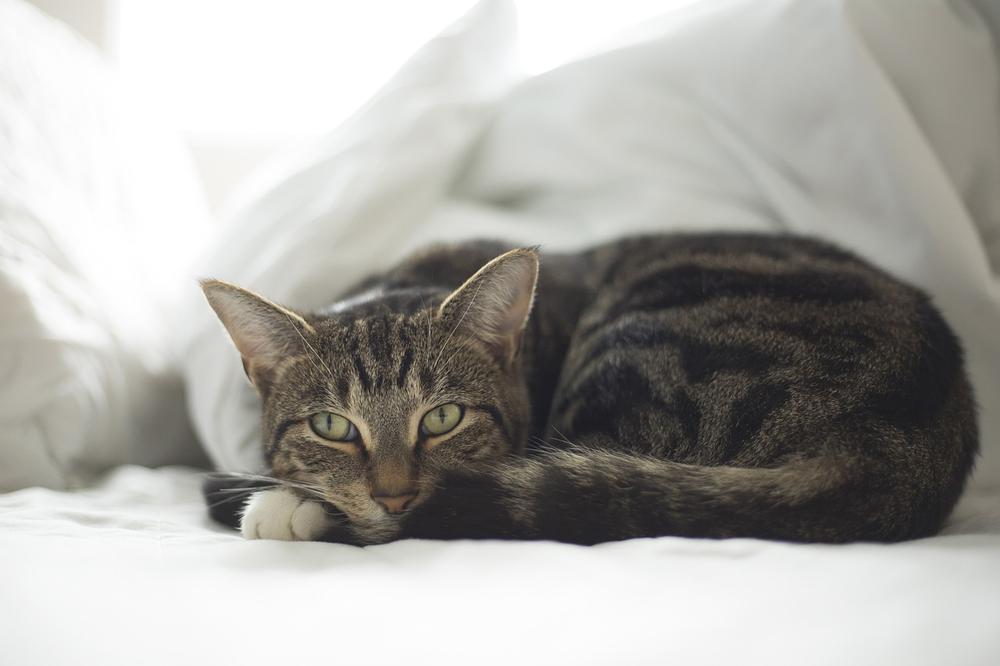Why Do Cats Have Fear of Balloons? (Help Them Overcome It)

Picture this:
Your cat catches sight of a harmless, floating balloon and instantly morphs into a furry ball of fear 😱.
You're left scratching your head, wondering what could possibly possess your precious feline to go into full-on freakout mode.
Well, fret not, fellow cat owner.
I hear you, and I feel your pain. You're not alone in this perplexing journey.
So, let's delve into the depths of this balloon-induced terror together, shall we?
Buckle up, because we're about to uncover the truth behind your cat's fear...
And maybe even find a solution.
Let's dive in!
Understanding Feline Fear of Balloons
Cats may fear balloons due to past experiences with loud noises and sudden movements. Balloons can appear as flying predators or strange creatures, triggering fight or flight instincts. The fear is not related to smell, but rather the size, unpredictability, strange sounds, and bright colors of balloons.
Cats can be pretty tricky, right?
And if your cat cowers at the sight of balloons, you might be scratching your head trying to figure out why.
But hey, don't worry!
I've got some insights for you.
First things first, let's understand that cats' fear of balloons could come from past experiences with loud noises or sudden movements associated with them.
It's all about making our furry buddies feel safe, you know?
You see, cats naturally fear the unknown and big objects. And balloons?
They've got it all—static electricity, shakey movements, and just plain strange behavior.
To our feline friends, balloons can look like flying predators or weird creatures, triggering their fight or flight instincts.

They might even mistake balloons for dangerous stuff and stress about getting hurt.
Now here's where it gets interesting:
Balloon-like things can seem like intruders or unfamiliar beings to cats, causing all sorts of reactions.
Maybe it's the popping noise that reminds them of firecrackers, or the quick moves that mimic prey. The fact that balloons are unpredictable and huge only makes the fear worse.
Oh, by the way, cats' fear of balloons isn't about smell like some other phobias.
Nah, it's all about the size, unpredictability, weird sounds, and bright colors that make cats suspicious.
Knowing this fear is half the battle, my friend.
But don't worry (pun intended)!
Next, I'll give you some possible explanations and solutions.
So stay tuned!
Main points I'll expand upon further down this article:
- Cats may fear balloons due to the squeaky sounds that bother their sensitive ears.
- Shiny balloons can attract cats, potentially leading to them bursting the balloon and swallowing pieces.
- The sound of escaping air from balloons can be scary for cats.
- Water-filled balloons add an additional fear factor for cats who are already afraid of water.
- Cats may exhibit signs of fear, such as hiding and aggression, when encountering balloons.
- Balloons generate static electricity, potentially shocking cats and reinforcing their negative association.
- Ingestion of balloon pieces can be hazardous for cats, causing blockages in their digestive system.
- Secure environments and gentle training techniques can help cats feel more comfortable around balloons.
- Positive reinforcement and reconditioning their fear with positive associations can help cats overcome their fear.
- If a cat is still afraid of balloons even after slow introduction, it's best to keep balloons away and seek vet help if needed.
But wait, there's more to uncover about why our feline friends fear balloons!
Let me walk you through some common signs of fear and additional factors that contribute to their anxiety.
Recognizing Signs of Fear in Cats Around Balloons
When it comes to balloons, cats can display a range of fear signs. Here are some specific behaviors to watch out for:
- Dilated pupils: This is a classic sign of fear and anxiety in cats.
- Flattened ears: When cats feel scared, their ears tend to lie flat against their heads.
- Crouched body posture: A cat will typically lower its body closer to the ground when feeling fearful or threatened by balloons.
Apart from these common fear signs, there are additional factors that contribute to cats' fear of balloons:
- The squeaky sounds balloons make can bother cats with sensitive ears.
- Shiny balloons may attract cats, leading them to burst the balloon during play and potentially swallow pieces.
- The sound of escaping air from balloons can also frighten cats.
- Water-filled balloons add another fear factor for cats who are already afraid of water.
In response to balloons or other unfamiliar objects, cats often exhibit fear signs such as hiding, hissing, and even aggression.
On top of that, screeching noises when balloons are rubbed and unknown sounds beyond human hearing range can distress cats further.
The popping sound and high-pitched noises of balloons can startle cats and trigger instinctual fear responses.

By recognizing these fear signs, you can help your feline friend feel safer and more comfortable around balloons. 😺
But what happens when a cat's fear of balloons goes beyond just temporary discomfort?
You may be surprised to learn that traumatizing experiences with balloons can have long-lasting effects on cats, impacting their all in all well-being.
And that's not all... There are other potential dangers and negative associations with balloons that you need to be aware of for the sake of your furry companion.
So let's dive into this in more detail!
Effects of Balloon-Related Trauma on Cats
Traumatic balloon experiences can inflict lasting fear in cats, harming their wellbeing.

Purposefully frightening them with balloons damages emotional health, strains owner-cat bonds, and heightens anxiety. Balloons' colorful appearance engenders static electricity that can shock cats, reinforcing their negative perception.
Moreover, consuming balloons poses digestive hazards as they may obstruct the cat's system.
While predators like coyotes, bobcats, and foxes pose obvious dangers to cats, you might be astonished to discover bananas can also terrorize felines due to their keen sense of smell.
Helping Your Cat Overcome Fear of Balloons
Gradual desensitization exercises and a secure environment
If your cat is scared of balloons, here's how you can help them get over their fear.
Start by showing them deflated balloons from far away, then gradually bring them closer.
This way, your cat will learn to associate balloons with positive experiences instead of fear.
Just ensure to keep any popped balloons out of their reach so they don't swallow them and get hurt.
Gentle training techniques and positive reinforcement
To help your cat overcome their fear of balloons, try using gentle training methods that focus on rewarding good behavior. Give them treats, praise, or playtime when they start feeling more comfortable around balloons.
Slowly introduce balloons, distract them if needed, and create positive associations.

All these things can help your furry friend feel less afraid.
And please remember, always supervise them around balloons to avoid any choking or suffocation risks.
Overcoming loud popping sounds and other stressors
Besides balloons, cats may also be scared of loud popping sounds.
You can help them overcome this fear too with positive reinforcement. Reward and reassure them whenever they're calm during loud noises. Avoid using loud toys that could scare them even more and damage their trust in humans.
When it comes to car rides, take steps to make them feel safe and comfortable, because motion, loud noises, and unfamiliar smells can stress them out.
Apart from balloons, there are many other ways to show your cat love and make them feel secure.
Give them extra cuddles, playtime, and treats to boost their happiness and confidence.
Seeking Professional Help for Cat's Phobia of Balloons
If your cat is freaking out over balloons, it might be time to get some help.
You could seek advice from either a vet or animal behaviorist, who can give you the support and guidance you need.
Here's why professional help might be necessary:
- If your cat's balloon phobia is making their life a living hell, stopping them from eating, playing, or chilling out, it's definitely time to reach out for some assistance.
- Even if you've slowly introduced balloons and tried different ways to make your cat less scared, if they're still going bananas over them, it could be wise to consult a pro.
- If your furry buddy gets physically sick with symptoms like refusal to eat, throwing up, or other health problems when they see balloons, it's crucial to talk to a veterinarian. Making sure they're healthy is top priority.
But hey, don't worry too much.
In many cases, cats can conquer their fear on their own with a little time, patience, and tender loving care. Most kitties are perfectly fine just avoiding balloons altogether in the comfort of their home.
And that wraps up today's article.
If you wish to read more of my useful articles, I recommend you check out some of these: Cat Eating Cardboard, Why Does My Cat Want to Go Outside, Why Does My Cat Hates Being Held, and Are Cats Scared of the Dark
Talk soon,
-Sarah Davis